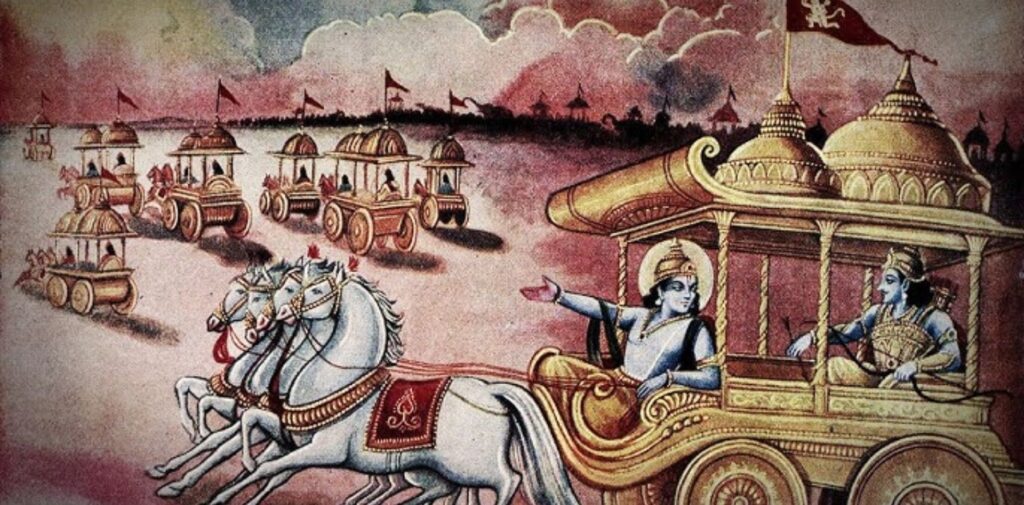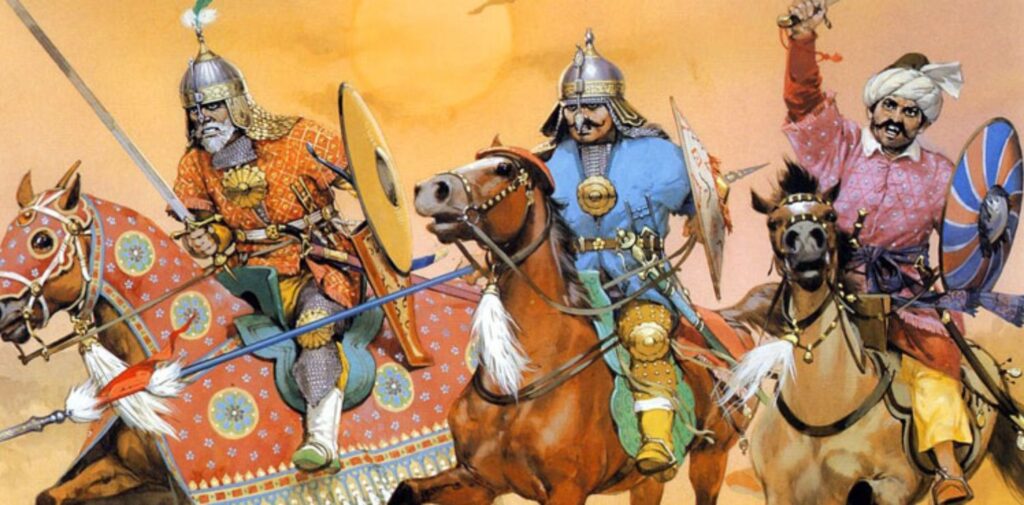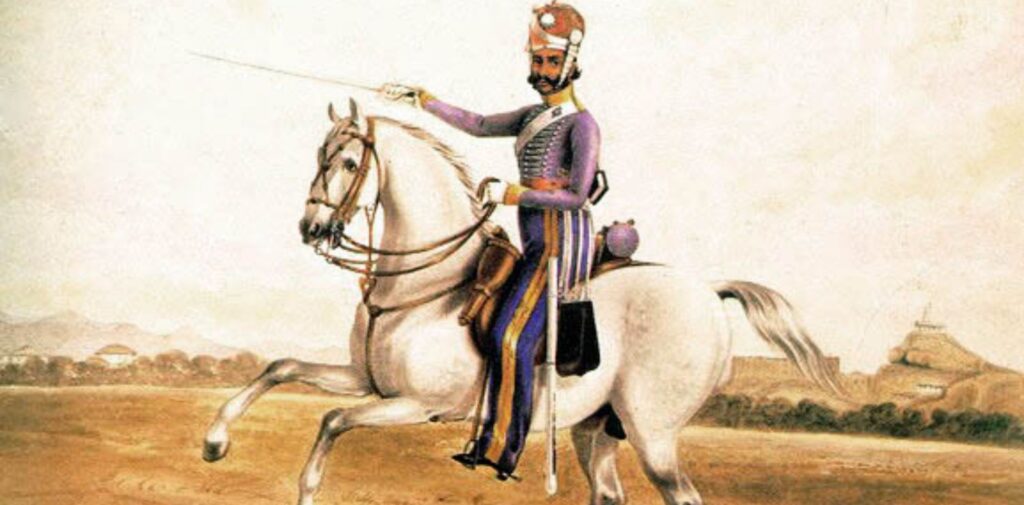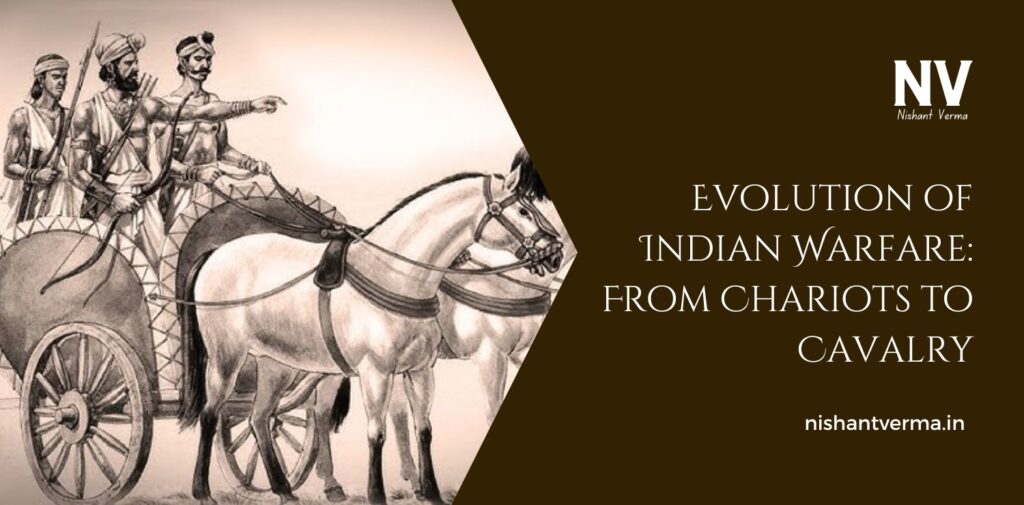India, with its rich and diverse history, has witnessed many changes in how wars were fought. From the ancient times of chariots to the rise of cavalry (soldiers riding horses), Indian warfare evolved in many exciting ways. The changing techniques, weapons, and soldiers shaped the history of India and played an important role in its independence struggle. This article will take you on a journey through the different stages of warfare in India, explaining how it evolved from the time of chariots to the rise of cavalry.
Early Indian Warfare: Chariots and Elephants
The history of warfare in India goes back thousands of years. One of the earliest forms of warfare in ancient India involved chariots. Chariots were small, fast vehicles pulled by horses or oxen. These were used by warriors to move quickly across battlefields and strike at the enemy.
The Role of Chariots in Ancient Wars
Chariots were important in the early wars fought in India. The Mahabharata, one of the most famous epics of India, describes grand battles with chariots leading the charge. Chariots were fast and could carry archers or spearmen, making them a deadly force in battle. Warriors like Arjuna in the Mahabharata were known to fight from chariots, using their bow and arrows to attack enemies from a distance.

Elephants in Warfare
Another powerful animal used in ancient Indian warfare was the elephant. Elephants were huge, strong, and able to carry heavy armor and warriors on their backs. They were used to charge at enemies and trample over soldiers, making them a terrifying sight on the battlefield. Elephants were often the centerpiece of armies, especially in the early Indian kingdoms.
The Rise of Infantry and Cavalry
While chariots and elephants were important in early Indian warfare, the need for infantry (foot soldiers) and cavalry (soldiers on horseback) began to grow over time. As kingdoms expanded and battles became more complex, warriors needed to fight in different ways.
The Use of Infantry
The infantry played a very important role in battles, especially during the time of the Maurya and Gupta empires. The foot soldiers were armed with swords, spears, and shields. They were trained to fight up close and could adapt to different types of terrain. Infantry soldiers often formed the backbone of Indian armies, working in large groups to overpower the enemy.
The Growth of Cavalry
At the same time, cavalry began to rise in importance. Soldiers on horseback could move much faster than infantry and chariots, giving them a big advantage in battle. Cavalry soldiers were armed with swords, bows, and lances, which allowed them to attack the enemy from a distance or engage in close combat.
The rise of cavalry was particularly noticeable during the period of the Gupta Empire (around 320-550 CE). The Gupta rulers, known for their military skills, used cavalry to gain speed and flexibility on the battlefield. They also began using horses that were specially trained for war, making cavalry an essential part of Indian armies.

The Influence of Foreign Armies: The Mughals and Mounted Warfare
One of the most significant changes in Indian warfare came with the arrival of foreign invaders. During the medieval period, India saw the rise of powerful empires like the Mughal Empire. The Mughals, originally from Central Asia, brought with them new forms of warfare, including better mounted soldiers.
The Mughals and Cavalry
The Mughal Empire, which ruled India from the early 16th century, played a major role in transforming Indian warfare. The Mughals had an army that was mostly made up of cavalry soldiers. They used fast-moving horsemen armed with firearms, swords, and bows. The Mughal cavalry was highly trained, and their horses were well-equipped for battle.
The Mughal emperors, like Akbar, knew that cavalry was crucial for winning battles. They made sure to have large cavalry units that could attack quickly and retreat just as fast. This made their armies powerful and allowed them to conquer large parts of India.
Gunpowder and Firearms
The Mughals also introduced gunpowder and firearms into Indian warfare. While earlier Indian armies used bows and arrows, the Mughals brought muskets and cannons. These new weapons made cavalry even more dangerous, as soldiers could now shoot from horseback.
The Decline of Elephants and Chariots
As cavalry and infantry became more important, chariots and elephants began to lose their role in battle. Elephants were still used in some battles, especially by kings who wanted to show their power and wealth. However, with the rise of firearms and cavalry, elephants became less effective.
Chariots, once a major force in battle, also began to fade away. The growth of gunpowder weapons, such as cannons and muskets, made chariots and elephants vulnerable to attack. Armies began to focus more on foot soldiers and cavalry, which were better suited to the changing nature of warfare.
The Impact of Cavalry on Indian Warfare
The growth of cavalry had a huge impact on Indian warfare. Cavalry soldiers were fast, flexible, and could fight in different kinds of terrain, whether it was a flat battlefield or a mountainous region. They could launch quick attacks, strike from a distance with bows and guns, and retreat when necessary. This made cavalry a key part of most armies in India from the medieval period onward.
Cavalry also helped rulers maintain control over large territories. For example, Shivaji Maharaj, the Maratha king, used light cavalry to fight against the mighty Mughal Empire. His soldiers were fast and could strike quickly, which allowed them to carry out surprise attacks and retreat before the enemy could respond.

The Role of Cavalry in the Indian Independence Struggle
As we move closer to the time of Indian independence, cavalry played an important role in the struggles and wars that shaped the country’s future. During the British Raj, the British Army relied heavily on cavalry, especially for patrolling and controlling large parts of India. However, as the British rule became stronger, the Indian cavalry forces were eventually reduced.
But during the Indian Rebellion of 1857, known as the First War of Independence, many Indian rulers used their cavalry to fight against the British. Cavalry soldiers, led by leaders like Rani Lakshmibai of Jhansi and Bahadur Shah Zafar, fought bravely, although the rebellion was not successful in gaining independence. Nevertheless, the bravery of the cavalry soldiers became an important symbol of resistance.
Conclusion
Indian warfare has evolved dramatically over the centuries, from the early days of chariots and elephants to the rise of cavalry. The use of chariots, elephants, and foot soldiers shaped ancient battles, while the rise of cavalry brought new techniques and strategies to the battlefield. The Mughal Empire and other foreign invaders brought gunpowder and mounted warfare, further changing the course of Indian military history.
By the time of India’s struggle for independence, cavalry had played a crucial role in shaping the nation’s military identity. The changing nature of warfare— from chariots to cavalry—reflects the growth of Indian civilization and its adaptation to new challenges. This evolution of warfare not only helped in defending the land but also left behind a legacy of bravery, strategy, and transformation.




